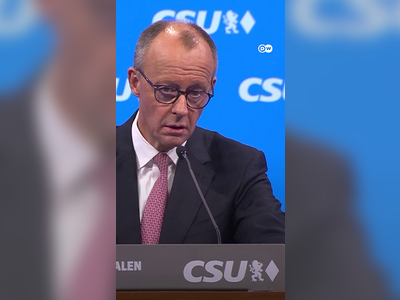0:00
0:00
Projected Costs and Funding Dynamics of the NHS: An In-Depth Analysis
UK health spending, predominantly on the NHS, has risen significantly, with projections indicating a continued upward trend due to demographic changes and increased healthcare demands.
The National Health Service (NHS) in the United Kingdom has seen a substantial rise in funding since its inception in 1948. In the fiscal year 2023-24, total UK health spending is projected to reach £226 billion, compared to approximately £17 billion in 1949-50 when adjusted for inflation.
Health spending varies across the UK, with per capita figures in 2022-23 reported as approximately £3,300 in England and Scotland, £3,600 in Wales, and £3,500 in Northern Ireland.
The Autumn Budget of 2022, presented by Chancellor Rachel Reeves, announced an additional £26 billion annual allocation for the English health budget by 2025-26, which is anticipated to have a spillover effect for devolved nations' health finances.
As a proportion of the economy, health spending has increased significantly.
In 1949-50, health spending accounted for 3.6% of the UK’s Gross Domestic Product (GDP).
By 2023-24, this figure has risen to 8.1%, following a peak above 10% during the COVID-19 pandemic, a rise primarily attributed to increased costs for vaccinations and the 'test and trace' program.
Currently, around 80% of total health expenditure in the UK is sourced from government funding, with the remaining 20% funded through private insurance and out-of-pocket expenses.
In comparison to other nations, the UK’s public health spending is notable but not exceptional.
In 2022, the UK allocated approximately 9.3% of its GDP to health, exceeding the figures for Canada (7.9%) and Italy (6.8%) but falling short of Germany (10.9%) and France (10.2%).
Meanwhile, the United States stands out with a spending rate of 14.1%, largely due to its predominantly private insurance framework.
Looking ahead, the Office for Budget Responsibility (OBR) has indicated that UK public health spending is likely to rise in the coming years, driven by factors such as an ageing population and increasing demand for medical services.
The average expenditure on healthcare rises significantly with age, from around £2,000 for those aged 45 to approximately £13,000 for individuals aged 85.
The OBR projects that the percentage of the population aged 65 and over will increase from 20% presently to approximately 25% by 2070. Its central forecast suggests that UK public healthcare spending could rise by around 3% annually after adjusting for inflation, potentially increasing from about 8% of GDP in 2024-25 to 14.5% by 2073-74, amounting to approximately £180 billion in 2023 currency terms.
Ensuring efficient allocation of resources remains a critical focus, especially as health spending accounts for a significant share of total government expenditure, increasing from around £1 in every £8 in the mid-1950s to roughly £1 in every £3 today.
Various stakeholders emphasize the need for the NHS to enhance productivity to manage rising costs effectively.
Currently, health sector productivity has not demonstrated consistent growth, with inputs showing a substantial increase while outputs have lagged.
As of late 2024, NHS 'inputs', primarily staff numbers, were reported to be 32% higher than pre-pandemic levels, while outputs related to services provided rose only 7%.
These findings suggest a productivity decline of roughly 19% compared to five years prior, though the measurement of productivity within public services continues to be a complex challenge.
Recently, some positive indicators of improvement have been noted, as reported by NHS England and the Institute for Fiscal Studies, suggesting potential shifts towards better productivity in hospital services.
The trajectory of NHS costs in the future will depend significantly on these productivity improvements and the broader economic context.
Health spending varies across the UK, with per capita figures in 2022-23 reported as approximately £3,300 in England and Scotland, £3,600 in Wales, and £3,500 in Northern Ireland.
The Autumn Budget of 2022, presented by Chancellor Rachel Reeves, announced an additional £26 billion annual allocation for the English health budget by 2025-26, which is anticipated to have a spillover effect for devolved nations' health finances.
As a proportion of the economy, health spending has increased significantly.
In 1949-50, health spending accounted for 3.6% of the UK’s Gross Domestic Product (GDP).
By 2023-24, this figure has risen to 8.1%, following a peak above 10% during the COVID-19 pandemic, a rise primarily attributed to increased costs for vaccinations and the 'test and trace' program.
Currently, around 80% of total health expenditure in the UK is sourced from government funding, with the remaining 20% funded through private insurance and out-of-pocket expenses.
In comparison to other nations, the UK’s public health spending is notable but not exceptional.
In 2022, the UK allocated approximately 9.3% of its GDP to health, exceeding the figures for Canada (7.9%) and Italy (6.8%) but falling short of Germany (10.9%) and France (10.2%).
Meanwhile, the United States stands out with a spending rate of 14.1%, largely due to its predominantly private insurance framework.
Looking ahead, the Office for Budget Responsibility (OBR) has indicated that UK public health spending is likely to rise in the coming years, driven by factors such as an ageing population and increasing demand for medical services.
The average expenditure on healthcare rises significantly with age, from around £2,000 for those aged 45 to approximately £13,000 for individuals aged 85.
The OBR projects that the percentage of the population aged 65 and over will increase from 20% presently to approximately 25% by 2070. Its central forecast suggests that UK public healthcare spending could rise by around 3% annually after adjusting for inflation, potentially increasing from about 8% of GDP in 2024-25 to 14.5% by 2073-74, amounting to approximately £180 billion in 2023 currency terms.
Ensuring efficient allocation of resources remains a critical focus, especially as health spending accounts for a significant share of total government expenditure, increasing from around £1 in every £8 in the mid-1950s to roughly £1 in every £3 today.
Various stakeholders emphasize the need for the NHS to enhance productivity to manage rising costs effectively.
Currently, health sector productivity has not demonstrated consistent growth, with inputs showing a substantial increase while outputs have lagged.
As of late 2024, NHS 'inputs', primarily staff numbers, were reported to be 32% higher than pre-pandemic levels, while outputs related to services provided rose only 7%.
These findings suggest a productivity decline of roughly 19% compared to five years prior, though the measurement of productivity within public services continues to be a complex challenge.
Recently, some positive indicators of improvement have been noted, as reported by NHS England and the Institute for Fiscal Studies, suggesting potential shifts towards better productivity in hospital services.
The trajectory of NHS costs in the future will depend significantly on these productivity improvements and the broader economic context.











